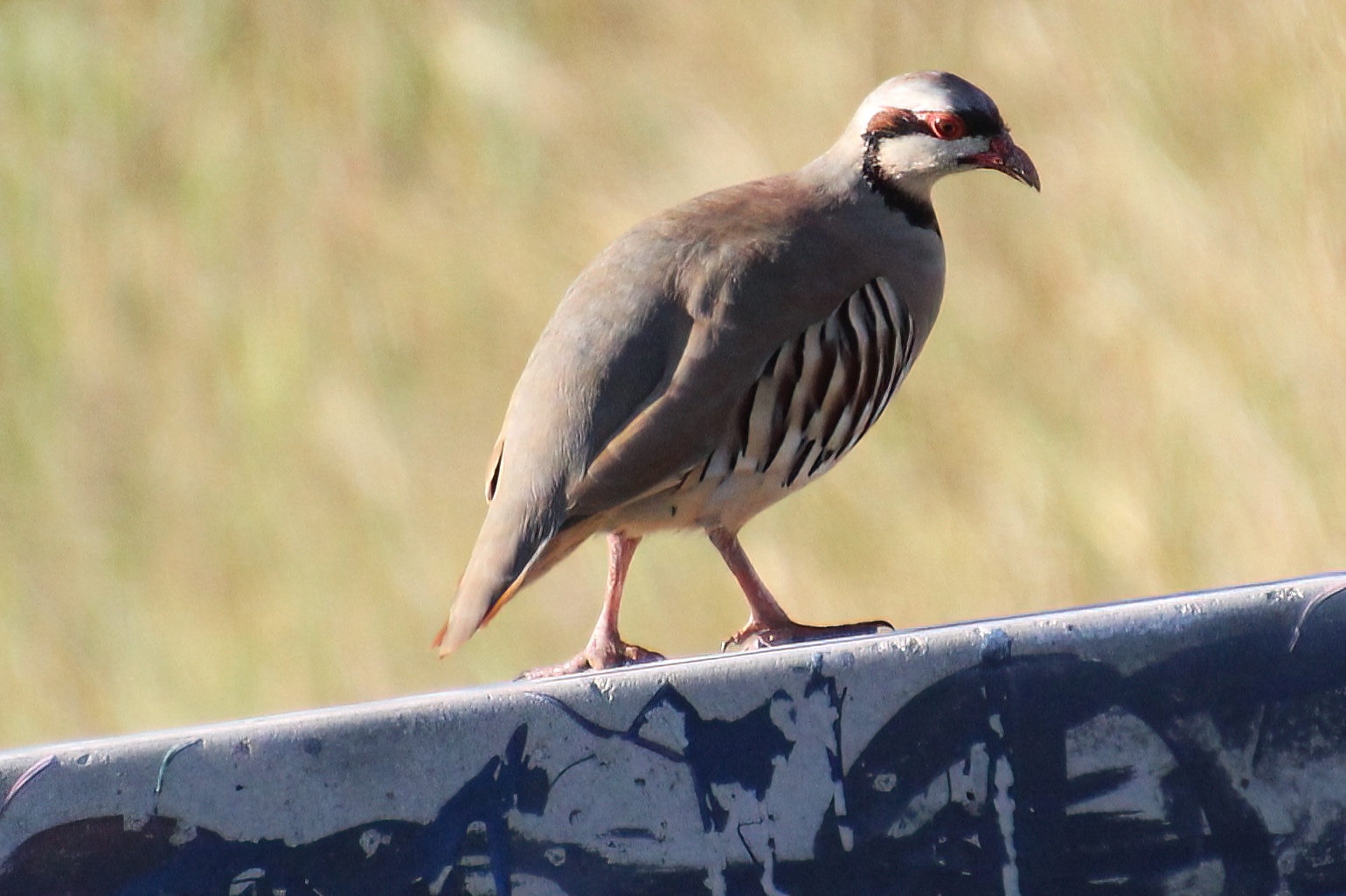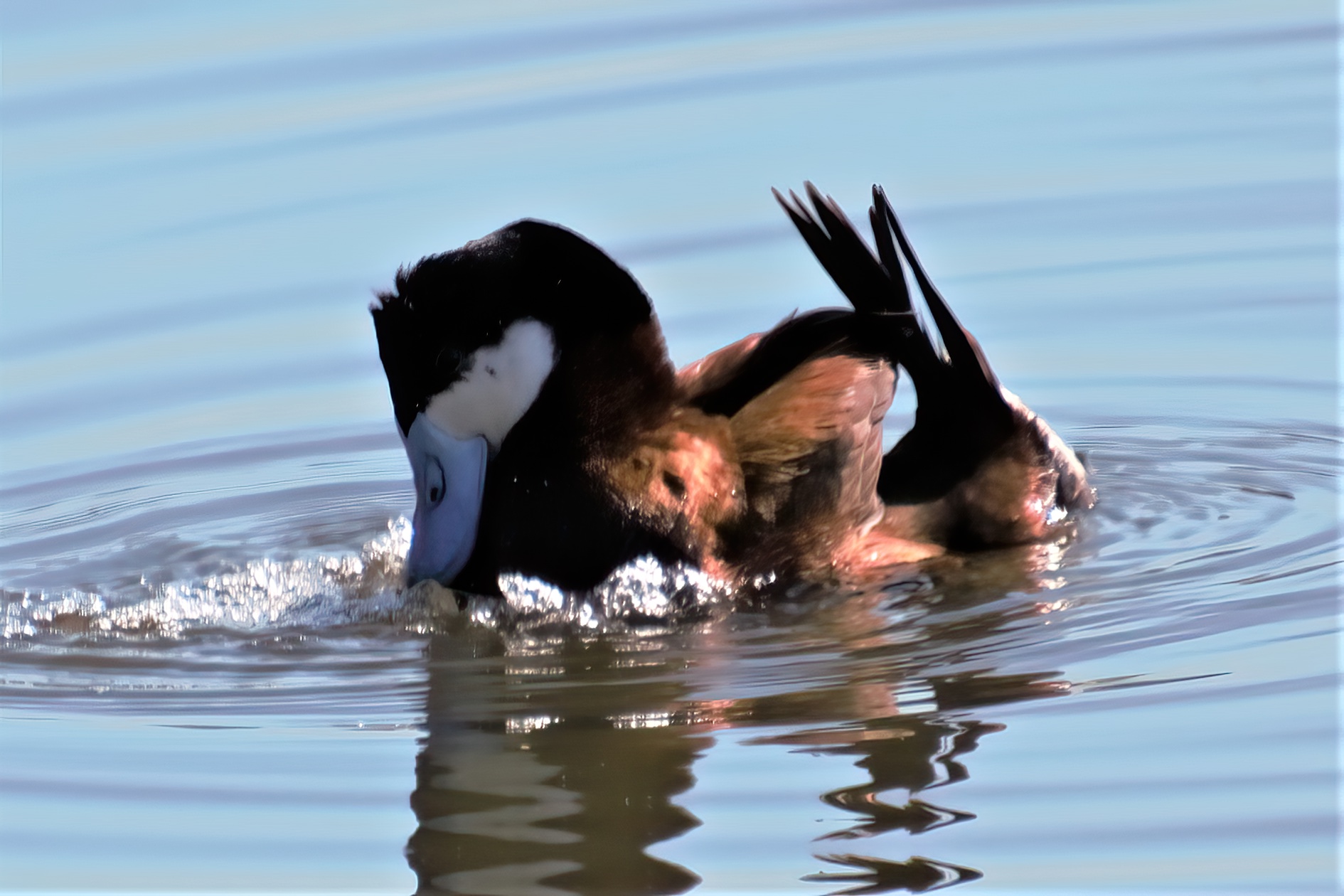It seems that one can wait a lifetime and not even be sure of what one is waiting for on any given day. Such a birding event occurred in the oddest of circumstances. Preparing to conquer a short slope to look at Dalmead Lake, south of Langdon, Elaine and I were surprised to see a “lifer”, that initial viewing of a new species.
If it was aware of our presence this bird didn’t seem to mind us, as we walked slowly towards it. Thinking at first that it was a gray partridge perched on a concrete barrier, we quickly ruled that out. Gray partridge are wary to the extreme. What were we looking at? With Elaine’s shutter clicking softly, we approached our mystery bird. With a delicate jump from the concrete barrier block our lifer hid in the long grass. Amazingly, we were able to move within a few feet of this species.
Ornate in color and beauty, the bird was a Chukar partridge. Just over a foot in length and sporting a small, roundish head, this sandy brown bird looks marvelous with nine bold black bars on each side. Adding to the striking appearance, a dark band goes through the eyes and surrounds both a white cheek and throat. To top things off, a Chukar has a red eye and a red bill.
Wondering how such an exotic looking partridge would be making prairie grassland and farm fields its home stoked our curiosity. Evidently, Chukars were introduced to North America in 1893 but very few survived. Between 1931 and 1970, more Chukars were introduced to 10 western states and to British Columbia. Chris Fisher, author of Birds of Alberta, notes that Chukars were also introduced as game birds in our province.”These birds have been raised on farms for decades”, stated Fisher in a 2019 CBC interview. “They’ve been released by breeders or escaped from farms for a while now.” Fisher also stated in the interview that Chukar sightings are reported “numerous times a year” in Calgary north or in the Airdrie area. Looking at the Chukar partridge, I thought about Alberta’s other exotic looking bird, the ring-necked pheasant. The pheasant had been introduced with success in the United States in 1881. Alberta’s first pheasants were raised and released in 1908 near Strathmore and then expanded their range over the decades with established populations in the 1930s.
Called the “devil bird” by some hunters, the Chukar can run and scamper quickly providing the hunter with a real challenge. Normally, the Chukar is very alert and calls out warnings when potential predators on land or in the air are nearby. Oddly, our Chukar sat in one spot, permitting us take photos with ease. How could such a partridge be so calm? We do believe this one was likely raised on a farm and had escaped. Our worries about its safety were validated when we found it a week later, its life ended by a predator.







